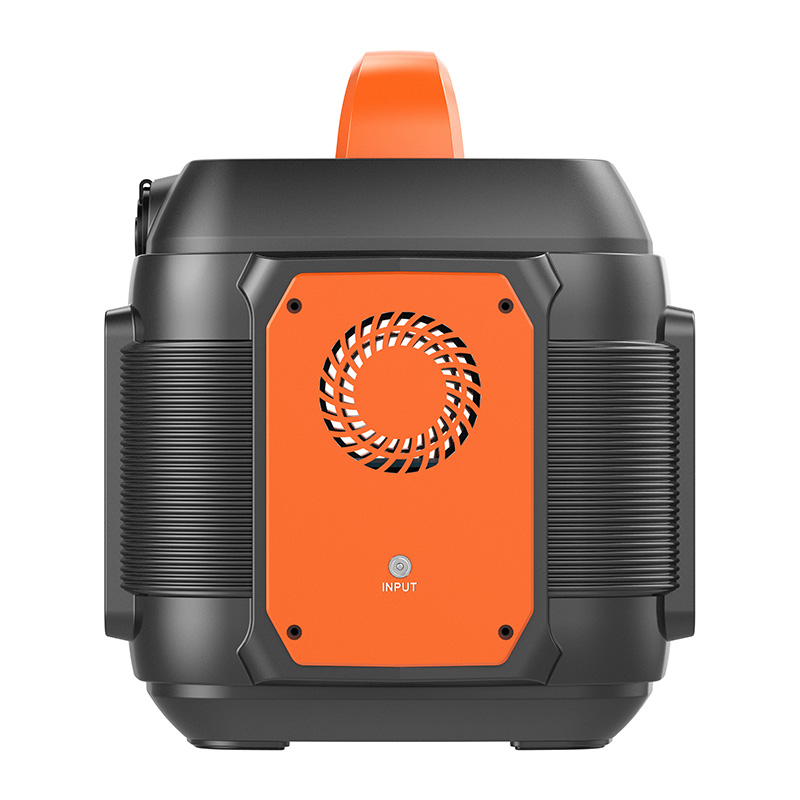Detailed description of 600W Portable Power Station
2024-06-28
A 600W portable power station is a compact, versatile device designed to provide electrical power on the go. These power stations are ideal for outdoor activities, emergency backup, and off-grid living. Here’s a detailed description of a 600W portable power station, covering its key features, components, benefits, usage, and considerations:
Key Features
1. Power Output:
- Wattage: Capable of delivering up to 600 watts of power.
- Surge Power: Often supports higher surge power to handle initial startup loads of devices.
- Multiple Outputs: Includes various output ports such as AC outlets, USB ports, DC ports, and sometimes USB-C ports.
2. Battery:
- Type: Typically uses lithium-ion or lithium iron phosphate (LiFePO4) batteries.
- Capacity: Measured in watt-hours (Wh), usually ranging from 500Wh to 1000Wh, providing hours of power depending on the load.
- Recharge Cycles: Designed for several hundred to thousands of charge cycles.
3. Recharge Options:
- AC Charging: Can be recharged using a standard wall outlet.
- Solar Charging: Compatible with solar panels for renewable energy recharging.
- Car Charging: Can be recharged using a 12V car adapter.
4. Inverter:
- Pure Sine Wave: Provides clean and stable power suitable for sensitive electronics.
- Efficiency: High-efficiency inverters convert DC to AC power with minimal energy loss.
5. Display:
- LCD Screen: Shows vital information such as battery level, input/output power, and remaining runtime.
- Indicators: May include LED indicators for charging status and alerts.
6. Ports and Connectivity:
- AC Outlets: Standard 110V or 220V outlets for household appliances.
- USB Ports: Multiple USB-A and sometimes USB-C ports for charging phones, tablets, and other gadgets.
- DC Ports: 12V carport and other DC outputs for devices like portable fridges and LED lights.
7. Safety Features:
- Protection: Includes overcharge, over-discharge, overcurrent, short circuit, and overtemperature protection.
- Cooling: Built-in cooling fans to prevent overheating.
8. Portability:
- Design: Compact and lightweight for easy transport.
- Handle: Integrated handle or carrying case for convenience.
Benefits
1. Versatility:
- Wide Application: Powers a variety of devices including laptops, smartphones, small appliances, lights, and medical equipment.
- Outdoor Use: Ideal for camping, hiking, RVing, and other outdoor activities.
- Emergency Backup: Provides reliable power during blackouts and emergencies.
2. Clean Energy:
- Renewable Charging: Solar-compatible for eco-friendly recharging options.
- No Emissions: Silent and emission-free operation, unlike gas generators.
3. Convenience:
- On-the-Go Power: Provides portable power wherever needed without the hassle of fuel or noise.
- Ease of Use: Simple plug-and-play setup with intuitive controls.
4. Safety:
- Safe Operation: Built-in safety features protect both the power station and connected devices.
- Reliable Power: Consistent and clean power delivery suitable for sensitive electronics.
Usage
1. Outdoor Adventures:
- Camping: Powers camping lights, portable fridges, and electronic devices.
- Hiking: Useful for charging GPS devices, cameras, and smartphones.
2. Emergency Situations:
- Power Outages: Provides backup power for essential devices like phones, lights, and medical equipment.
- Disaster Preparedness: Ensures you have a reliable power source during natural disasters.
3. Off-Grid Living:
- Remote Locations: Powers off-grid cabins or tiny homes with solar charging.
- Mobile Living: Suitable for RVs and vans, providing power without the need for hookups.
4. Work and Travel:
- Remote Work: Powers laptops, routers, and other office equipment in remote locations.
- Road Trips: Keeps devices charged during long trips, ensuring connectivity and convenience.
Considerations
1. Battery Capacity:
- Runtime: Choose a model with sufficient capacity to meet your power needs.
- Recharge Time: Consider the recharge time from various sources (AC, solar, car).
2. Port Availability:
- Number of Ports: Ensure it has enough ports to charge all your devices simultaneously.
- Type of Ports: Check for compatibility with your devices (AC, USB, DC).
3. Weight and Size:
- Portability: Balance the power capacity with the need for portability. Heavier units may be less convenient to transport.
4. Price:
- Budget: Higher capacity and more features generally mean a higher price. Determine your budget and power requirements.
5. Solar Compatibility:
- Solar Panels: If planning to use solar charging, ensure the power station is compatible with the solar panels you intend to use.
Conclusion
A 600W portable power station is a versatile, convenient, and eco-friendly solution for providing power on the go. Whether for outdoor adventures, emergency backup, off-grid living, or remote work, it offers reliable and clean energy to keep your essential devices running. When selecting a portable power station, consider your specific power needs, the types of devices you’ll be charging, and the available recharging options to choose the best model for your requirements.



